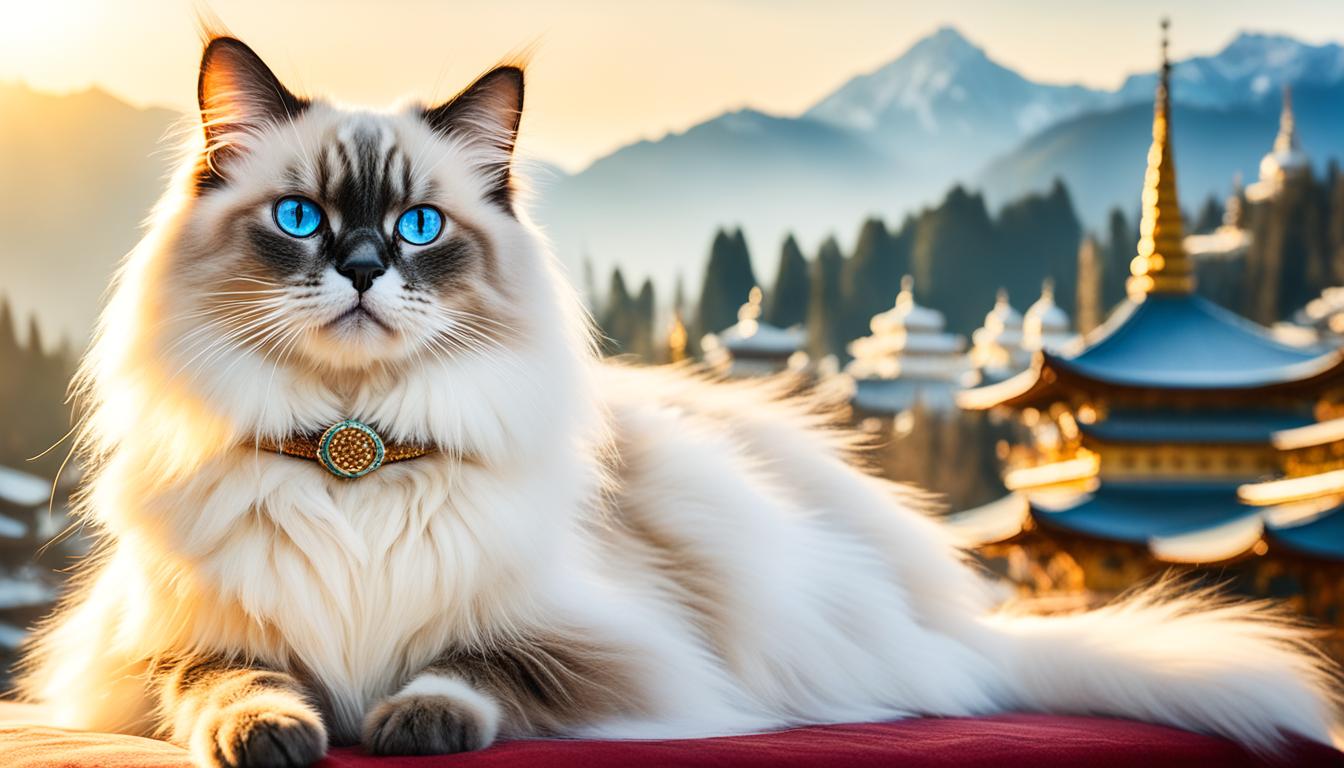The Origin of the Birman Cat Breed: A Sacred Tale
Imagine a cat with a story that goes back to ancient times. The Birman cat is such a breed, full of mystery. It comes from the sacred temples of northern Burma, now called Myanmar1. Let’s dive into the history and growth of this amazing cat, uncovering the sacred tale of the “Sacred Cats of Burma.”2
The Mystical Beginnings: Legends of the Sacred Cats
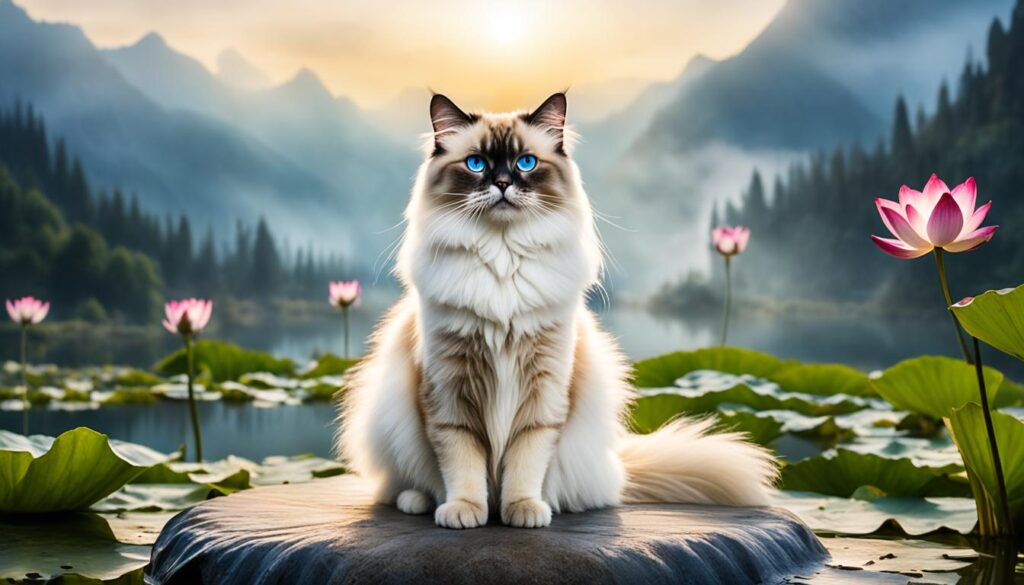
The Birman cat breed has deep roots in Burmese myths and legends3. A famous story says these cats were the sacred friends of the Kittah priests in the temples of Lao-Tsun in northern Burma3. These cats were very special, and no one was allowed to sell them, showing how much they were valued3.
Stories about the Birmans tell of a deep spiritual bond with the Kittah priests3. People thought these cats had a special divine power. Their white paws and blue eyes showed they were truly sacred4. This Burmese folklore has made the Birman breed very popular among cat lovers and breeders3.
Even if we’re not sure if these stories are true, they still give us a peek into the mythical start of the Birman cat5. The link to the Khmer Empire and its temples, plus their supposed role with the Burmese priests, has made the Birman a sacred cat5.
Emergence in France: The Earliest Records

The first records of the Birman cat were in 1925 in France6. A French woman named Thadde Hadisch got a pair of Birman cats. She started breeding them in France7. ‘Dieu d’Arakan’, born in 1930, was a key Birman cat before the war7.
Marcel Baudoin-Crevoisier was a top Birman breeder in France from 1929 to 19337. His cats, like ‘Dieu d’Arakan’, won many prizes in early 1930s cat shows7. But, he sold all his cats in 1933 due to money problems7.
Some cats went to Swiss breeder Abbott Marcel Chamonin, and others to Belgium and Italy7.
The Birman breed in France was improved by mixing with Siamese and Persian cats7. Baudoin’s careful breeding helped the breed grow and get noticed7.
By the end of World War II, the Birman breed was close to dying out in Europe8. The 1950s brought the Birman to the United States. It was officially recognized by the Cat Fanciers’ Association in 1967876.
origin of the Birman cat breed: Disputed Origins
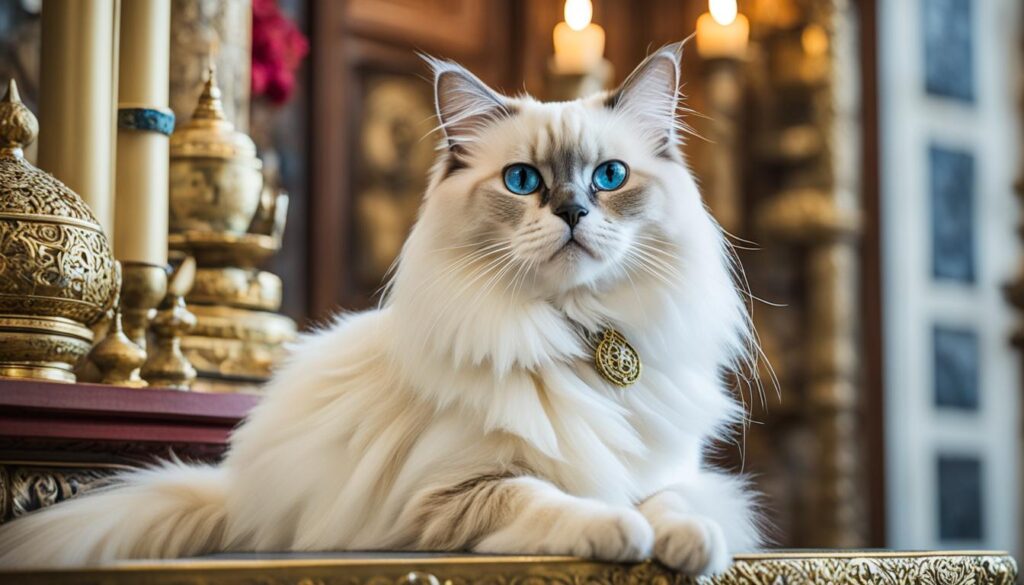
The story of where the Birman cat came from is still a mystery. Many think they came from the temples of northern Burma. But, how they got to France is a puzzle9. The French developed the Birman cat breed9. Its link to Burma’s temples has made its origins a big mystery.
Some say the Birman cats were sacred to Burmese priests10. Others think they came from mixing Siamese cats with local cats in Burma10. Their blue eyes and long, soft fur have made people wonder about their past. Researchers are looking into their genes and old records to learn more.
Even with unclear beginnings, the Birman cat has won the hearts of cat lovers all over the world11. They are known for being loving, smart, and looking like royalty. In the 1950s, they were first brought to the United States10. The mystery of where they came from makes their story even more interesting91110.
Post-War Revival and Rebuilding
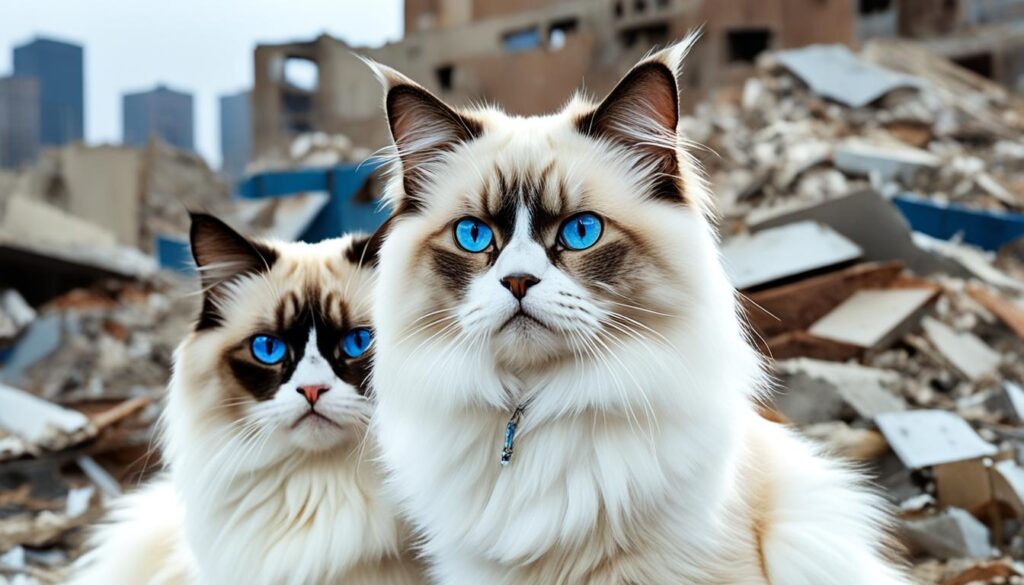
The post-war birman breed faced a big problem during World War II. The war almost made the breed disappear12. By the end of the war, only two Birmans were left in Europe. They were named Orloff and Xenia de Kaabaa, and they belonged to a breeder named Baudoin-Crevoisier12.
This loss was very sad and showed how fragile the rebuilding birman breed was. French breeders worked hard to save the breed12.
These French breeders used a method called outcrossing to bring back the breed. This method takes five generations to be officially accepted12. Thanks to their hard work, the Cat Fancier’s Association recognized the Birman breed in 196712.
Now, Birman cats are loved for their special looks. They come in colors like seal point, blue point, chocolate point, and lavender point, similar to the Siamese breed12. They usually weigh between 8 to 12 pounds for males and a bit less for females12.
The story of the Birman breed going from almost disappearing to being popular again shows how hard French breeders worked12. Their hard work made sure the Birman cat’s history and looks are still loved by people all over the world121314.
Appearance and Breed Standards
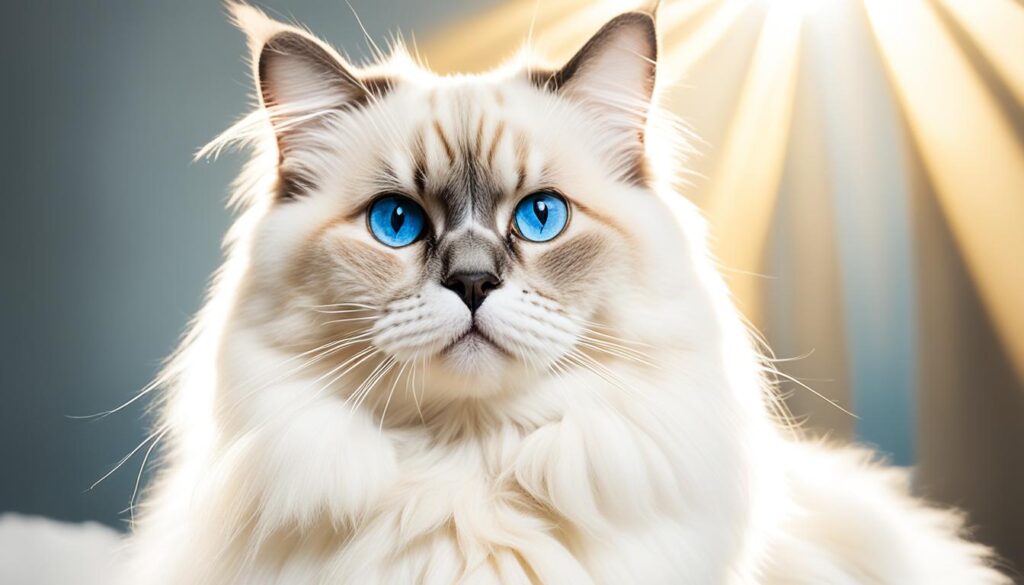
The Birman cat is a beautiful cat with a unique look. They have a medium size and a special body shape. Their head is broad and rounded, and their ears are small15. They have deep blue eyes that stay bright throughout their life15.
The Australian Cat Federation Inc. has strict rules for judging Birmans. These rules give points for different parts of the cat, like the body and eyes15. The points add up to 100, making sure the cat is judged well15.
Birmans come in many colors, like seal and blue points, and even unique ones like chocolate point15. The breed also looks for perfect white gloves on the paws15.
The ideal Birman cat has certain looks, like a balanced body and a special head shape15. They have a soft coat and a full ruff around their neck15. These standards help keep Birmans looking unique and loved by many15.
The Birman Temperament

Birmans are known for being gentle and loving. They act like dogs in how much they love their owners. Birman cats love to be around their family and enjoy playing with them16. They get very close to their family members16. These cats are calm and nice, perfect for families with kids or other pets16. Birmans love to play and be with their people16.
Birman cats don’t like to make a lot of noise. They talk softly when they need something16. They are medium to big cats, weighing 7-12 pounds17. People call them “The Sacred Cat of Burma” because they are quiet and not mean17. Even though they like to explore, they are friendly and can live in many homes17.
Birman cats can live from 9-15 years, sometimes even longer17. They come in many colors like seal, cream, and blue17. But, they might make some people sneeze because they’re not hypoallergenic17. Despite some health issues, Birman cats are known for being sweet and loving1718.
Colors and Coat Varieties
Birmans are known for their many birman coat colors and birman coat varieties. They have point colors like seal, chocolate, blue, and lilac. They also have their lighter versions (cream, blue cream, and lilac cream)19. These cats come in tabby and tortie patterns too20.
The seal point is a classic color, with a golden base and dark seal brown marks on the face, ears, and paws20. The blue point looks similar but with blue markings instead20. Chocolate point Birmans have an ivory base with deep chocolate points20. The lilac point has a pale coat with faded pinkish-gray marks, a rare color20.
There are more colors like red point, with bright reddish-gold points20, and cream point, with a light coffee cream color on a golden base20. Tortoiseshell Birmans mix different colors in their points20. They also have smoke and tabby patterns20.
Their semi-long fur needs regular grooming but is easier to care for than some other longhaired cats19. Keeping their litter box clean and giving them lots of playtime is key to their happiness192120.
Genetic Diversity and Health
The Birman cat breed faces big challenges with its genetic diversity. Studies show it has some of the lowest genetic diversity among cat breeds222324. This is because the breed started with a small group and struggled to recover after World War II. Only two cats survived22.
This low genetic diversity makes Birmans more likely to get sick. They often get a serious heart disease called Hypertrophic Cardiomyopathy24. This can lead to heart failure, paralysis, and even sudden death.
Birmans also risk Chronic Kidney Disease, Feline Infectious Peritonitis, and other eye problems2324. These health issues are a big concern for the breed.
Despite these health issues, the Birman breed is still loved around the world. It was first recognized in 1925 by the Cat Club de France. Then, the GCCF in England, the CFA in the U.S., and TICA in 1979 accepted it23. Its unique look and loving nature make it popular with cat lovers.
Keeping the Birman’s genetic diversity and health up is a big task. Responsible breeding, genetic tests, and ongoing research are key. They help keep the Birman healthy and safe for the future222324.
Conclusion
The Birman cat breed has a special story from Burmese myths. It has won the hearts of cat lovers all over the world25. They were first found in sacred temples in Lao-Tsun and later in 20th-century France. Their story is one of survival and wonder26.
During World War II, they almost disappeared. But, breeders worked hard to save them. Now, we have the Birman we love today.
Birmans stand out with their beautiful looks, kind nature, and friendly ways. They are smart, loving, and fit into many homes27. Even though they might have health issues, taking good care of them helps them stay healthy.
The birman cat breed, feline history, and sacred cats still enchant cat lovers. The Birman’s story shows how special this breed is. It proves its lasting place in the hearts of cat fans everywhere262527.
